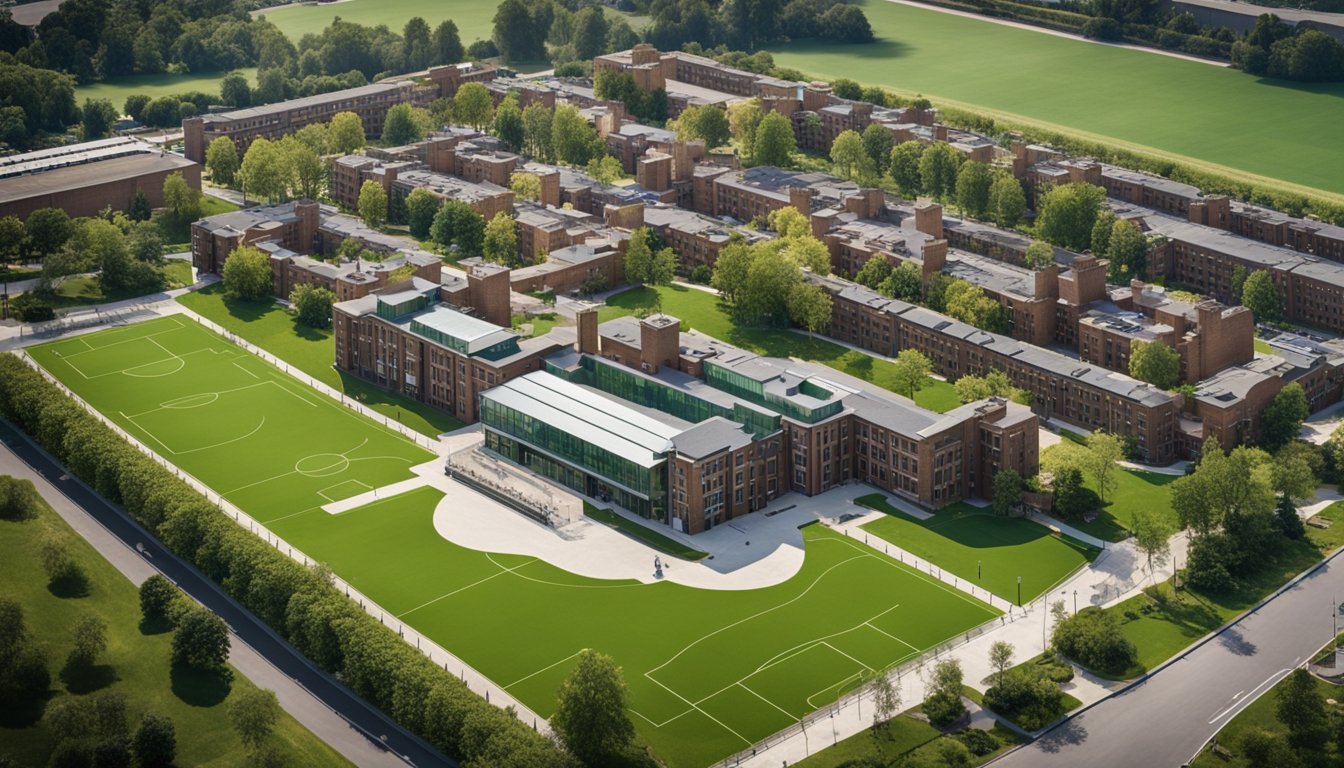Late updated: 14 Apr 2025 10:04
Written by:
Understanding The British Education System For Parents: A Guide
Navigating the British education system can seem daunting for parents, especially those unfamiliar with its structure and stages. Our aim is to equip you with a brief understanding of the UK education system, which is divided into primary, secondary, further, and higher education. This unique system provides structured stages, paving the way from early childhood education to advanced studies or employment.

As we explore the fundamental elements of education in the UK, we'll look at compulsory education's key stages and compare different types of schools available to families. These insights will help parents make informed decisions about their children's educational paths.
Questions often arise concerning how the school system impacts our children's growth and opportunities. By addressing these, we hope to guide parents through the intricacies of education in England, ensuring they can confidently navigate choices that influence their children's future.
Key Takeaways
- The UK education system includes primary, secondary, further, and higher education stages.
- Parents have diverse school options to consider for their children's education.
- Common parental queries about the system are directly addressed.
Understanding Key Stages and Compulsory Education
In the UK, the education system is structured into distinct stages designed to provide clear progression for children and young people. Each stage builds upon the previous, ensuring a comprehensive educational journey from early years to further education.
Early Years Foundation Stage and Primary Education
The Early Years Foundation Stage (EYFS) is for children aged 0 to 5 and marks their introduction to structured education. This stage focuses on developing crucial skills such as communication, literacy, and social skills through play-based learning. After completing the EYFS, children transition to primary education, starting with Key Stage 1 at age 5, which covers years 1 and 2 of primary school.
In primary education, Key Stage 2 encompasses years 3 to 6, catering to children aged 8 to 11. Here, pupils engage with the National Curriculum through core subjects like English, Maths, and Science, alongside foundation subjects such as History and Art. Regular assessments help track their progress, preparing them for the move to secondary school.
Transition to Secondary Education and GCSEs
Transitioning to secondary education occurs at age 11 with entry into Key Stage 3, which includes years 7 to 9. At this stage, pupils continue with a broad range of subjects aligned with the National Curriculum. This stage is essential for setting the groundwork for more focused studies.
By Key Stage 4, which encompasses years 10 and 11, students begin preparing for General Certificate of Secondary Education (GCSE) exams. Here, they typically study a mix of core subjects—such as English, Maths, and Science—and a selection of optional subjects, which could include languages, arts, or humanities. Successful completion of GCSEs is crucial for progression to further education.
Further Education: A Levels and Vocational Qualifications
Post-16, students enter further education, which offers a choice between A Levels and vocational qualifications. A Levels are subject-specific and usually studied over two years in sixth form or college. Students typically choose three to four subjects that align with their career goals or university aspirations.
Vocational courses provide practical, career-focused pathways in areas like healthcare or engineering and are ideal for students seeking direct entry into the workforce or apprenticeships. Both A Levels and vocational qualifications are vital components of further education, offering pathways to higher education or employment.
Comparing Different Types of Schools

In navigating the British education system, parents often encounter a variety of school types, each offering different opportunities. Here, we examine the distinctions between state and private schools, as well as specialised choices like grammar and religious institutions.
State Schools vs Private Schools
State schools, funded by the government, provide free education to all children. They follow the National Curriculum and their funds come primarily from local authorities. We see these schools often characterised by larger class sizes due to the obligation to educate all children in their catchment area. Education standards are monitored by Ofsted, ensuring consistent quality across the board.
In contrast, private schools, or independent schools, charge tuition fees and have the freedom to set their own curriculum. They tend to have smaller class sizes and often boast impressive facilities and extracurricular opportunities. These schools are typically funded through tuition, donations, and endowments. Educational standards at private schools, although not regulated by Ofsted, are generally evaluated by independent bodies. The flexibility in curricula can also lead to a broader range of subjects, including the option for more vocational education in some cases.
Specialised Institutions: Grammar and Religious Schools
Grammar schools are selective state schools that admit students based on academic performance, usually determined through the 11-plus exam. These institutions often receive high marks for educational achievements and cater to students with strong academic skills. Educational standards are typically high, with many students progressing to higher education.
Religious schools integrate religious education into the standard curriculum and may be either state-funded or independent. Their primary focus lies in teaching according to specific religious principles, which attracts families seeking education aligned with their faith. Like other state schools, religious state schools must follow the national curriculum, while independent religious schools may have more leeway in curricular choices.
Our understanding of these various school types helps us guide parents through selecting the best educational path for their children, considering the unique attributes and offerings of each.
Frequently Asked Questions

In the UK education system, schools are organised into distinct stages according to students' ages, with unique qualifications needed at each stage. Understanding the relationship between year groups and student ages, as well as differences from systems such as the one in the US, is essential for parents navigating this landscape.
What are the different stages of education in the United Kingdom?
The UK education system is divided into four main stages: primary education, secondary education, further education, and higher education. Each stage serves specific age categories and provides a structured path from early learning to advanced education, fostering skills appropriate for each developmental stage.
Can you explain the UK school system's grade and age relationship?
Students typically begin primary education at age 4 or 5, progressing through Key Stages 1 and 2 until age 11. Secondary education follows, covering Key Stages 3 and 4, where students are generally aged 11 to 16. Sixth Form or further education caters to 16 to 18-year-olds, preparing them for exams like A-levels.
How does the UK education system accommodate international students?
The UK education system offers various support services for international students, including English language assistance and cultural adjustment programmes. Schools and universities often have dedicated staff to help international pupils integrate and succeed academically and socially within the UK context.
What are the qualifications required at each level of the UK education system?
Key Stage 4 students work towards obtaining General Certificates of Secondary Education (GCSEs). Post-16 education may lead to A-levels, BTECs, or other vocational qualifications. Higher education involves pursuing undergraduate or postgraduate degrees, typically requiring A-levels or equivalent qualifications for entry.
How do the year groups in the UK correspond to student ages?
The UK school year starts in September. Children enter Reception at age 4, progressing annually: Year 1 at age 5, Year 2 at 6, and so forth. This structure continues up to Year 13, catering to ages 18 to 19, with each year group corresponding closely to the child’s age.
In what ways does the education system in the UK differ from that of the United States?
The UK system emphasises early specialisation, with students choosing A-level subjects at age 16. Unlike the US, where students receive a broader education until age 18, UK students focus on fewer subjects. UK schooling terminates formal education earlier, with university entry often at age 18.
